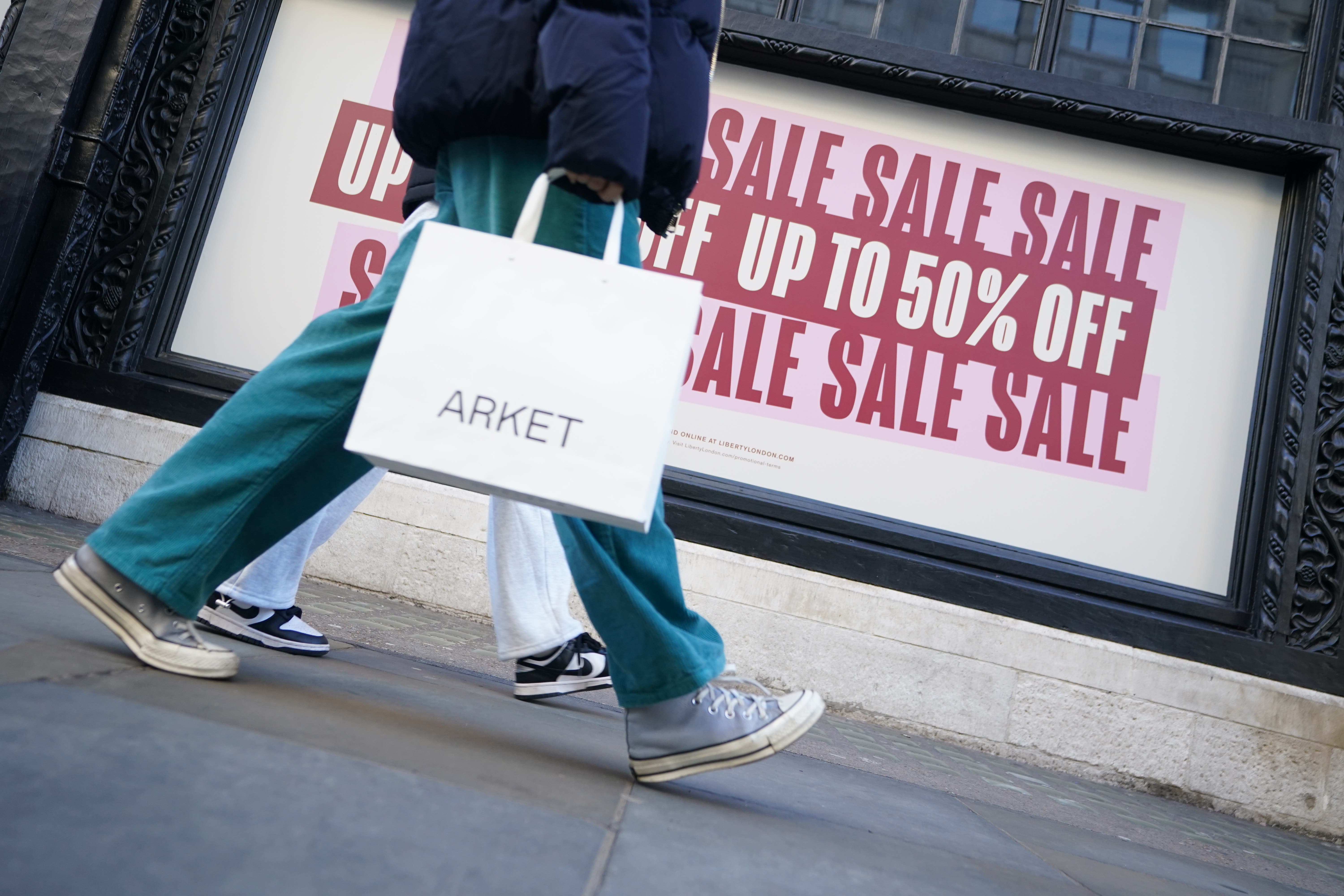Boxing Day shopping footfall up by more than a third on last year
Concerns had been raised that strikes and tightening budgets could scare consumers away on the first day of the sales.

Boxing Day footfall was up by more than a third on the UK’s high streets despite train strikes and the cost-of-living crisis.
Concerns had been raised that strikes and tightening budgets could scare consumers away from shopping destinations on the first day of the sales.
But industry analyst Springboard said data from Monday showed footfall was 38.8% higher than last year.
There were increases across all three key retail destination types compared with the same period in 2021.
On high streets it was up by 44.1%, in shopping centres by 40.4%, and in retail parks by 25.9%.
Central London, which has been hit hard by industrial action by transport unions, saw footfall more than double on Boxing Day. The figure for London was just 7.8% lower than the same day in 2019.
Diane Wehrle, insights director at Springboard, said a likely factor in the increase was that Boxing Day 2021 fell on a Sunday rather than a weekday, but added that the latest figures showed that the morning was particularly busy this year.
“Over the 24 hours of Boxing Day footfall was up from 2021 by about 39%,” she said.
“So a slightly smaller increase than the period up to 12pm, but it was in line with our expectations. We did expect the uplift to turn off slightly towards the end of the day. That is exactly what happened.
“It demonstrates that the morning of Boxing Day this year was much busier than the morning of Boxing Day last year.”
Up to noon footfall was up by 59.4% on high streets, 46.6% in shopping centres, and 33.7% in retail parks.
The minute the trains strikes hit, that gap widened to 20%, and we are still at around that level, which is a big gap, and a very sudden gap
Ms Wehrle added that train strikes had had an effect on footfall this year, adding: “Inevitably there will have been an effect. I think we can see that quite clearly in the gap in footfall between 2022 and 2019.
“Prior to the train strikes there was an ongoing gap of around 12% in footfall between 2019 and 2022.
“The minute the trains strikes hit, that gap widened to 20%, and we are still at around that level, which is a big gap, and a very sudden gap.”
Last December, Covid rules are thought to have impacted shoppers, with restrictions in Wales, Scotland and Northern Ireland, including wearing masks in all shops and limiting indoor group sizes to six.
London’s West End performed particularly strongly this year, with footfall up 65% compared with last Boxing Day.
The New West End Company, which represents 600 retail, restaurant, hotel and property owners across the central London shopping area, said the figures were “positive news” for the high street.
Chief executive Dee Corsi said: “Across the West End, we have seen a welcomed increase in Boxing Day footfall, with figures up by 65% on last year.
“This is positive news for the high street, however visitor numbers remain 16% lower than pre-pandemic levels – we must give retailers and leisure occupiers the best possible chance to seize upon improved conditions and grow in 2023.”
However, she added that an end to the train strikes, and lifting Sunday trading restrictions, would be necessary for the capital’s businesses to “truly prosper”.
“Only by all parties coming to an agreement to end the rail strikes, and the Government looking at new growth measures such as the lifting of Sunday trading restrictions in London’s international centres, can our high street businesses truly prosper as we head into the new year,” she said.